Ford Ranger Black Edition Spec
Still trying to work out which Ford Ranger is best for you? Check out the following individual model reviews for more inspiration:
- Ford Ranger Thunder special edition review - tested November 2020 (opens in new window)
- Ford Ranger Black Edition review - tested May 2018
- Ford Ranger Wildtrak Euro 6 review - tested June 2016
- Ford Ranger Limited 3.2 Euro 5 review - tested February 2016
We can also help you find new and used Ford Rangers near you:
>> New Ford Ranger pickup for sale
>> Used Ford Ranger pickups for sale
>> Best pickups compared
Ford Ranger Black Edition review
Tested May 2018 by CJ Hubbard
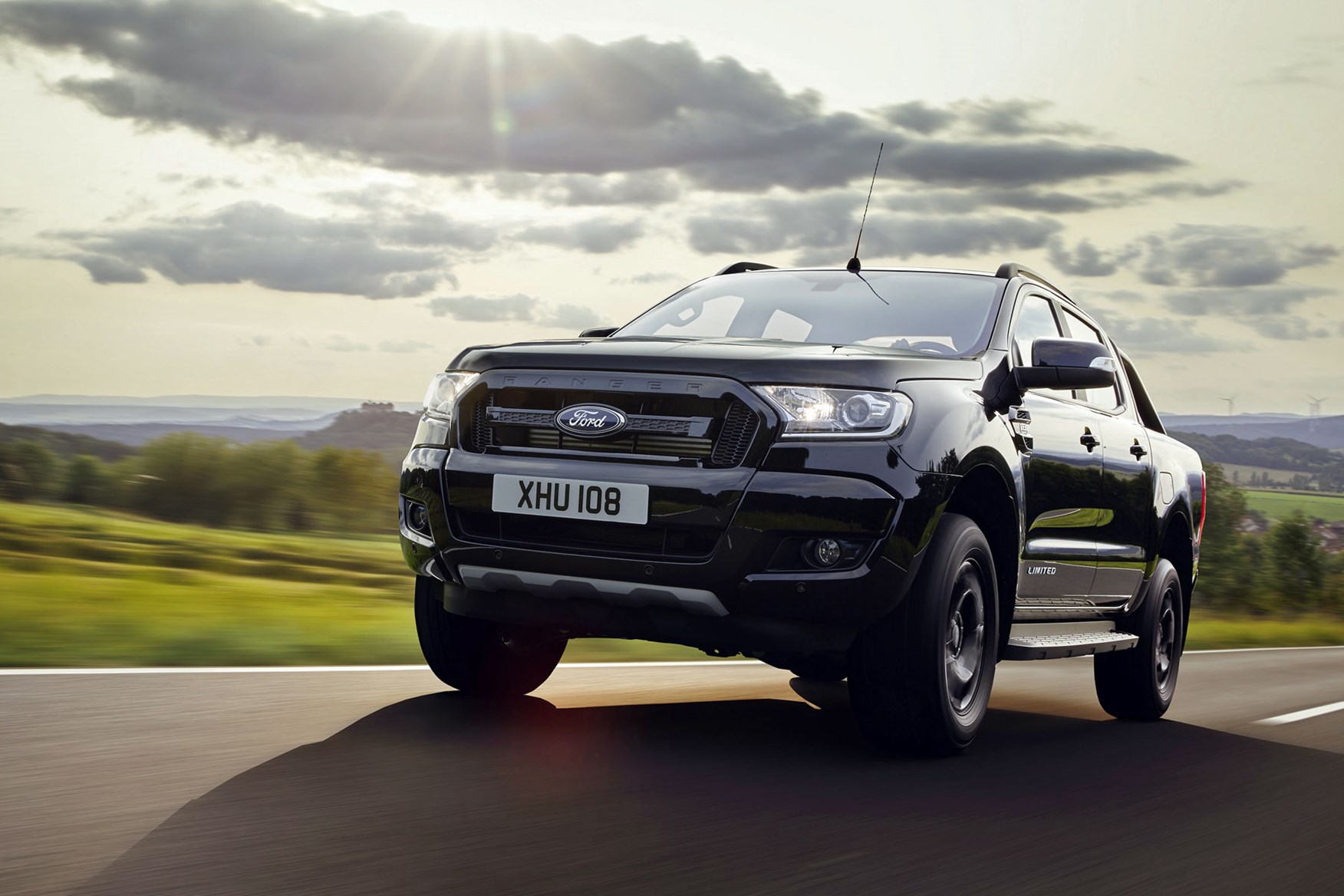
- Limited edition version of UK's bestselling pickup driven
- Based on Ranger Limited – but completely de-chromed
- Lots of standard kit, ideal for Batman enthusiasts
The Ford Ranger is hardly a pickup lacking in assertiveness in standard form, but if you really want to scare Audi drivers out of the outside lane we suggest you take a closer look at this limited-run Black Edition model.
We're not sure we've ever seen such a sinister-looking pickup.
As the name suggests, almost everything on the exterior of this Ranger has been tinted black – if you're into dressing up as Batman or Darth Vader, this has got to be the truck for you.
Is it as much of a badass as it appears? Keep reading our Ford Ranger Black Edition review to find out…
What's special about the Ford Ranger Black Edition?
Beyond the Darth-spec exterior design, you get a shed-load of standard equipment – to the extent that while the Black Edition is based on the Ranger Limited trim level, it's got most of the fancy features of the flashier Wildtrak model.

Not content with Shadow Black mica paint of the bodywork (amusingly known as Absolute Black on the Continent), the Ranger Black Edition has all of the following finished in black as well:
- Front grille
- Fog light bezels
- Front and rear bumpers
- Sports bar
- Roof rails
- Door mirrors
- Door handles
- Tailgate handle
- Beltline mouldings
- 17-inch alloy wheels
And that's just on the outside; on the inside you'll also find black leather seats and 'premium' black carpet floor mats.
On top of this you get the following standard equipment (additions to the regular Limited spec in bold):
- Dual-zone climate control
- Ford Sync3 infotainment with 8.0-inch touchscreen
- DAB radio, Bluetooth, voice control
- Android Auto and Apple CarPlay
- Satellite-navigation
- Heated front seats (only driver's seat is heated on Limited)
- Front and rear parking sensors
- Reversing camera
- Centre console coolbox
The only major extras the Wildtrak model gets that the Black Edition doesn't are 18-inch alloy wheels, ambient interior lighting, aluminium roof rails, a different sports bar and some titanium trimming (most of which is black on the Black Edition, as you'd expect).
There is one glaring difference between the Black Edition and the Wildtrak, however – and that's what's under the bonnet.
Is the Ranger Black Edition available with the 3.2-litre engine?
Nope. The Black Edition is strictly restricted to the 160hp / 385Nm 2.2-litre TDCi turbodiesel engine – which means it's not only down 40hp and 85Nm compared to the exclusively 200hp / 470Nm 3.2-litre TDCi Wildtrak, but also quite a bit of refinement and smoothness as well.
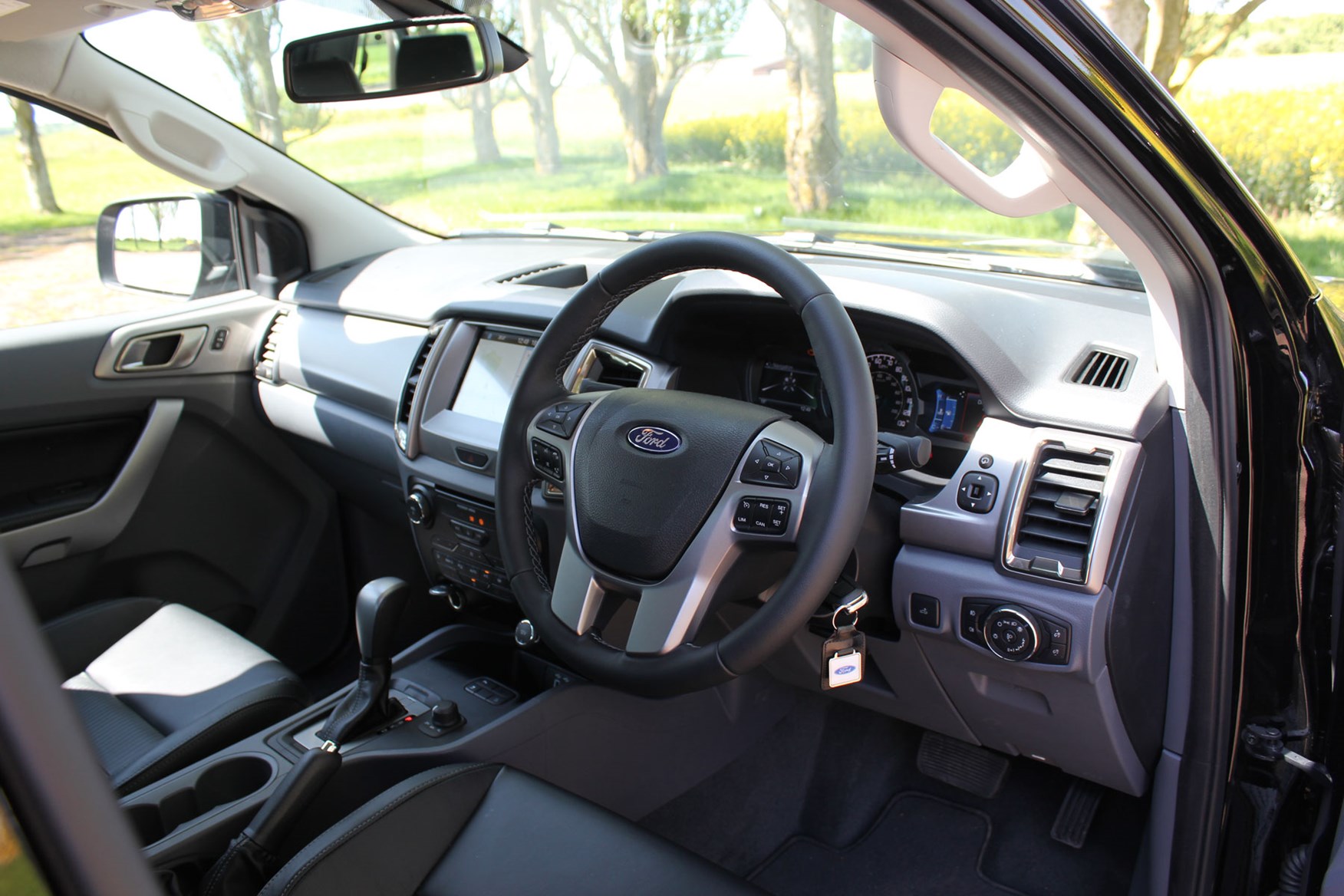
Driven in isolation, this perhaps won't be such a big deal, although you'll likely still notice how clattery it is at idle, especially when cold. But if you're at all familiar with the Ranger's bigger engine, you will probably miss the extra hit of performance the 3.2 gives you.
To put that difference into raw figures, when equipped with the optional automatic gearbox, as tested here, the 2.2-litre engine takes 12.8 seconds to go 0-62mph – which is 2.2 seconds slower than the 3.2-litre automatic.
Approximately 60% of UK buyers currently choose the 3.2-litre unit, too – though this may in part be due to the Wildtrak also being particularly popular, the regular Ranger Limited is also available to buy with the 2.2 and the 3.2, a choice Black Edition buyers won't get to make.
What's the rest of the Ranger Black Edition's driving experience like?
Typical Ranger – meaning that while the ride quality is annoyingly jiggly at lower speeds, especially when there isn't any weight in the back, you do get very tidy road manners in exchange.
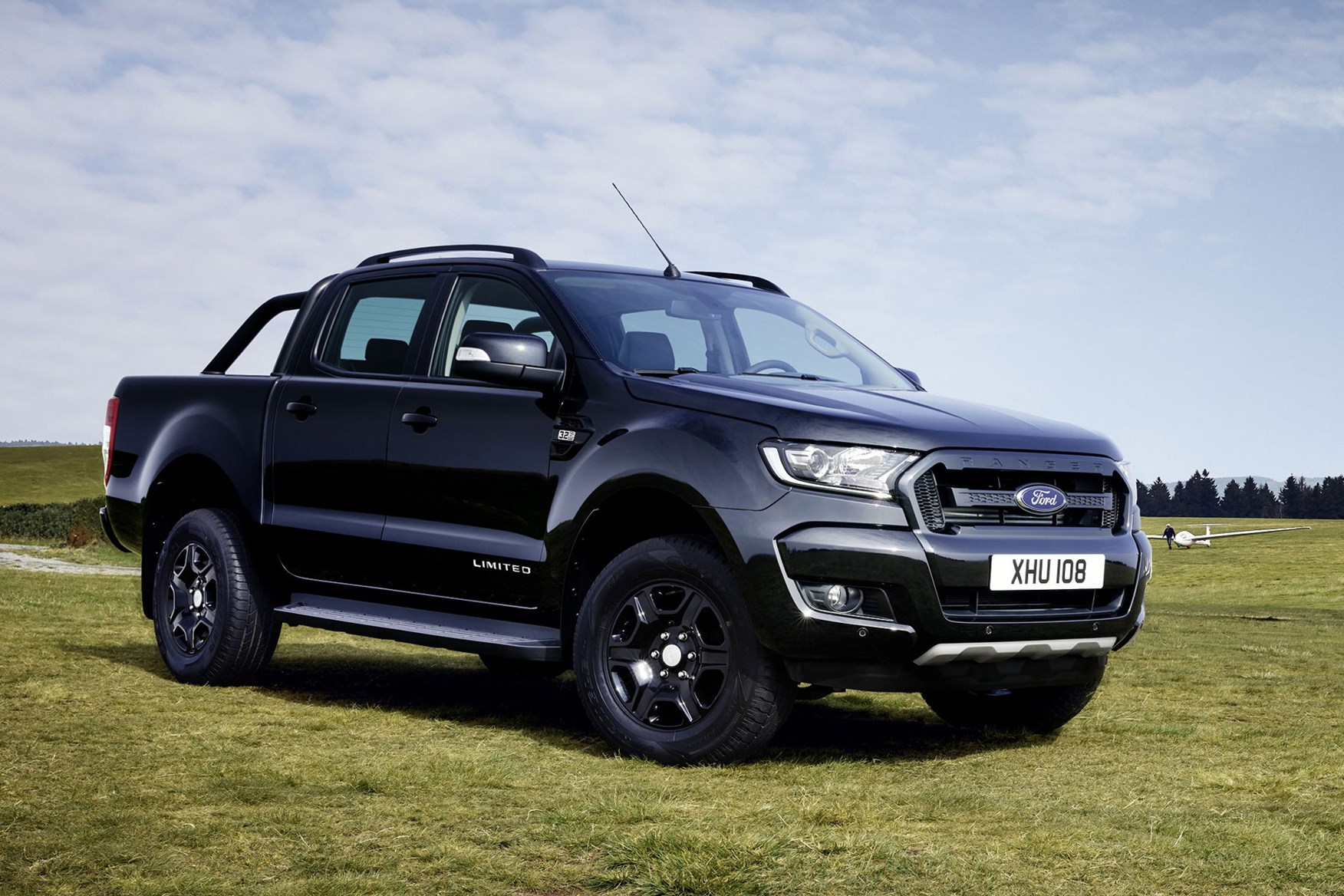
It's right up there with the Mercedes X-Class when it comes to handling corners at speed, for example, with predictable and manageable levels of bodyroll, and steering that actually feels responsive.
The reduced weight of the 2.2-litre engine helps a bit with this compared with the 3.2, enabling the Ranger to change direction a little more quickly and precisely.
Unfortunately, Ford's six-speed automatic gearbox didn't win many fans on this occasion, being clearly outclassed for smoothness and decisiveness by the more modern eight-speed auto fitted in the VW Amarok Dark Label we also had in on test at the same time.
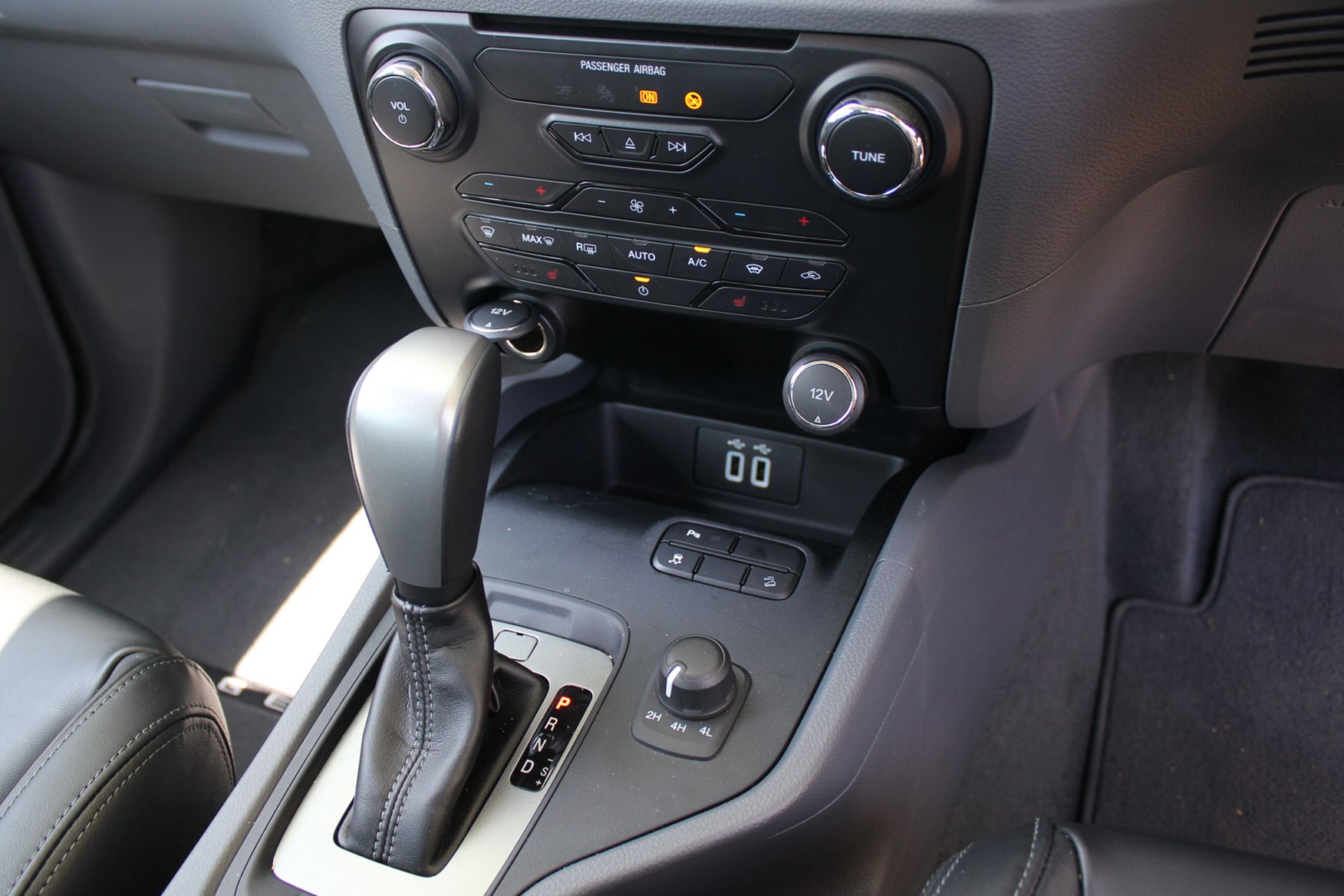
The Ranger uses a switchable four-wheel drive system, meaning you spend most of the time in rear-wheel drive mode on the road, which should be more fuel efficient. The official claim is 36.2mpg, but you'll be lucky to top 30mpg in our experience.
Is the Ford Ranger Black Edition good value?
At £27,995 basic excluding VAT, the Black Edition auto is priced around £1,050 more than an equivalent Ranger Limited with the same engine and transmission.
Considering the additional specification and the limited edition nature of the vehicle – Ford plans to sell just 2,500 Black Editions worldwide – we don't think that's bad value at all.
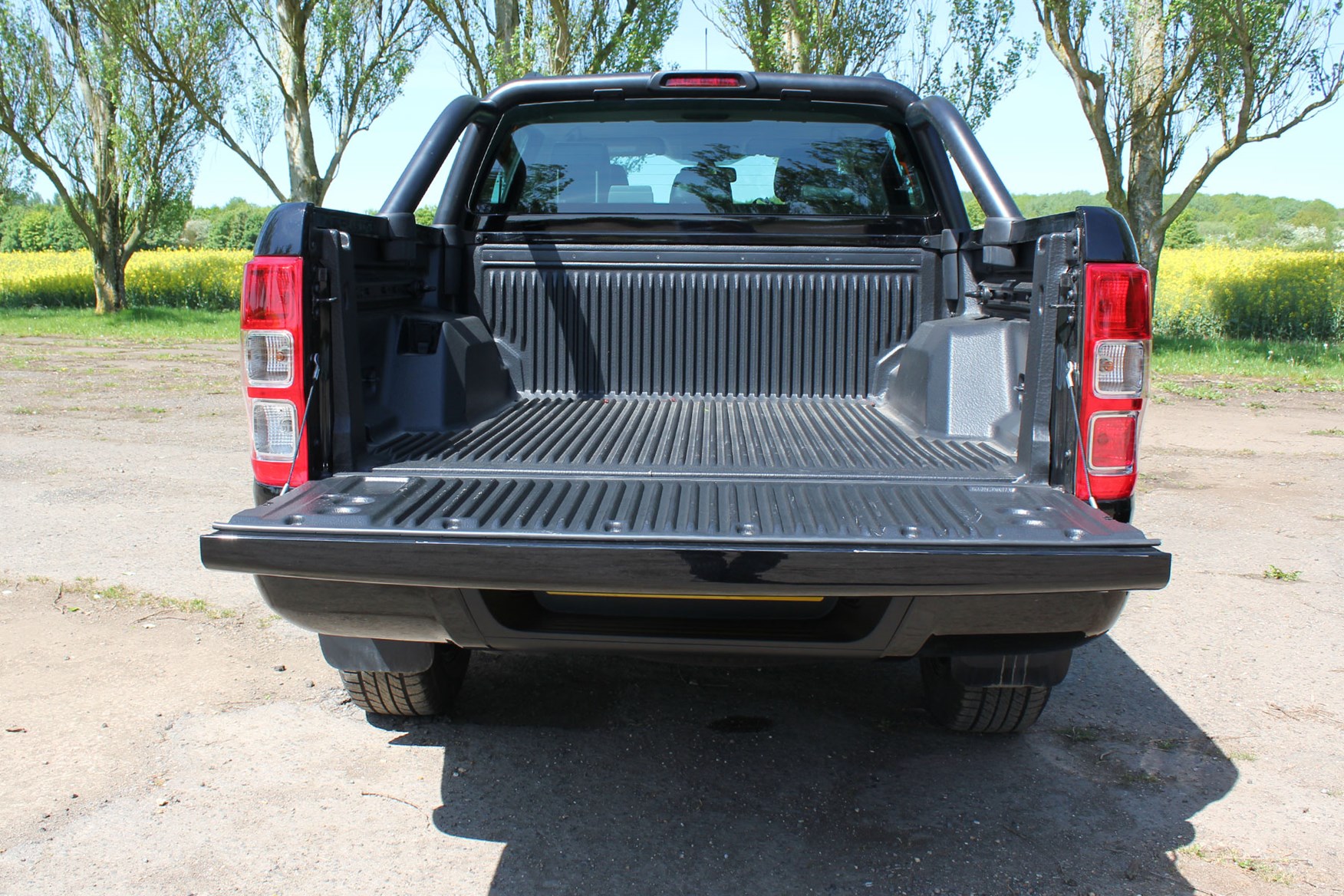
It's certainly a lot cheaper than the aforementioned Amarok Dark Label (£33,650 basic), but that is also powered by a 204hp V6 turbodiesel, which partly explains the difference.
Things get a little trickier when you compare the Ranger Black Edition to the Ranger Wildtrak; at £28,795 with the automatic gearbox, the Wildtrak is just £800 more, has all the same standard kit and the more powerful 3.2-litre engine.
Just a thought.
If you like the all-black look, you might also consider a used Mitsubishi L200 Barbarian SVP; there is an SVP II model in showrooms at the time of writing with many of the same exterior modifications, but this also has bright orange trimmings, which may not be to all tastes.
Verdict: Should I buy a Ford Ranger Black Edition?
This is an attractive example of the UK's bestselling pickup truck – it has plenty of hard-working capability beneath those striking looks, too.
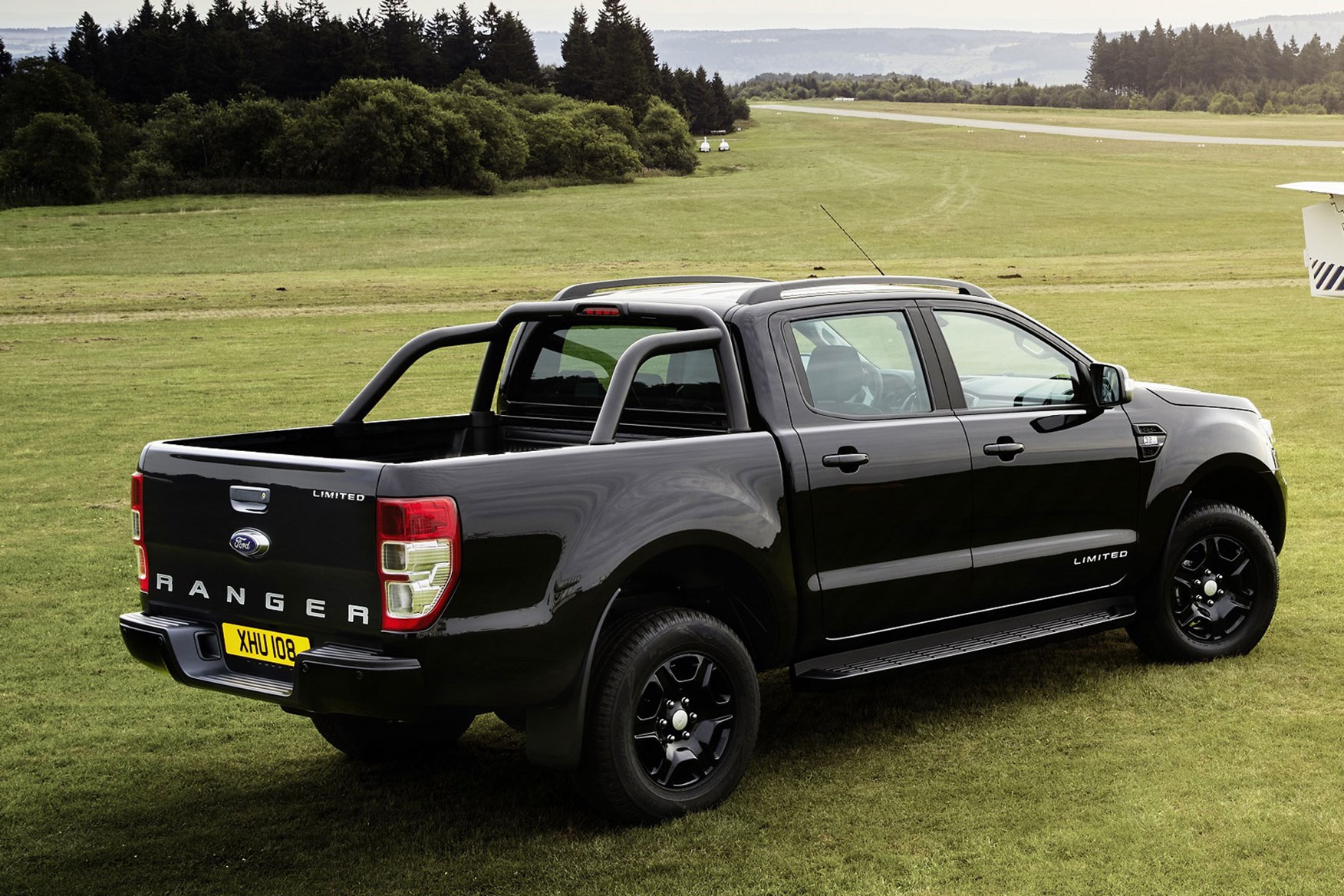
Its rarity and its standard equipment levels mean it should hold its value well, and as ever the Ranger is easy enough to live with if you don't mind the irritable ride. A strong choice, then, if you can live without the 3.2-litre engine.
Ford Ranger Wildtrack Euro 6 review
Tested June 2017 by CJ Hubbard

- Range-topping Ranger tested in Euro 6 guise
- Smart looks and lots of toys, including active safety
- Hard work to drive, limited payload, poor mpg
The Ford Ranger is the UK's favourite pickup truck, outselling every rival. This is our first chance to try the new-for-2017 Euro 6 version, in this instance a Wildtrak Double Cab model with the big 3.2-litre five-cylinder TDCi turbodiesel engine.
Euro 6 – or stage 6, as Ford sometimes calls it –actually came into force back in September 2016, but manufacturers were able to continue selling stocks of Euro 5 vehicles while they lasted. Hence Euro 6 Rangers have only just started to arrive in the UK.
Spot the difference?
To tell the difference between a Euro 5 Ranger – as facelifted in early 2016 – and the new Euro 6 Ranger you'll have to look under the fuel flap, where you'll find there's now a filler neck for an AdBlue tank as well as for diesel.
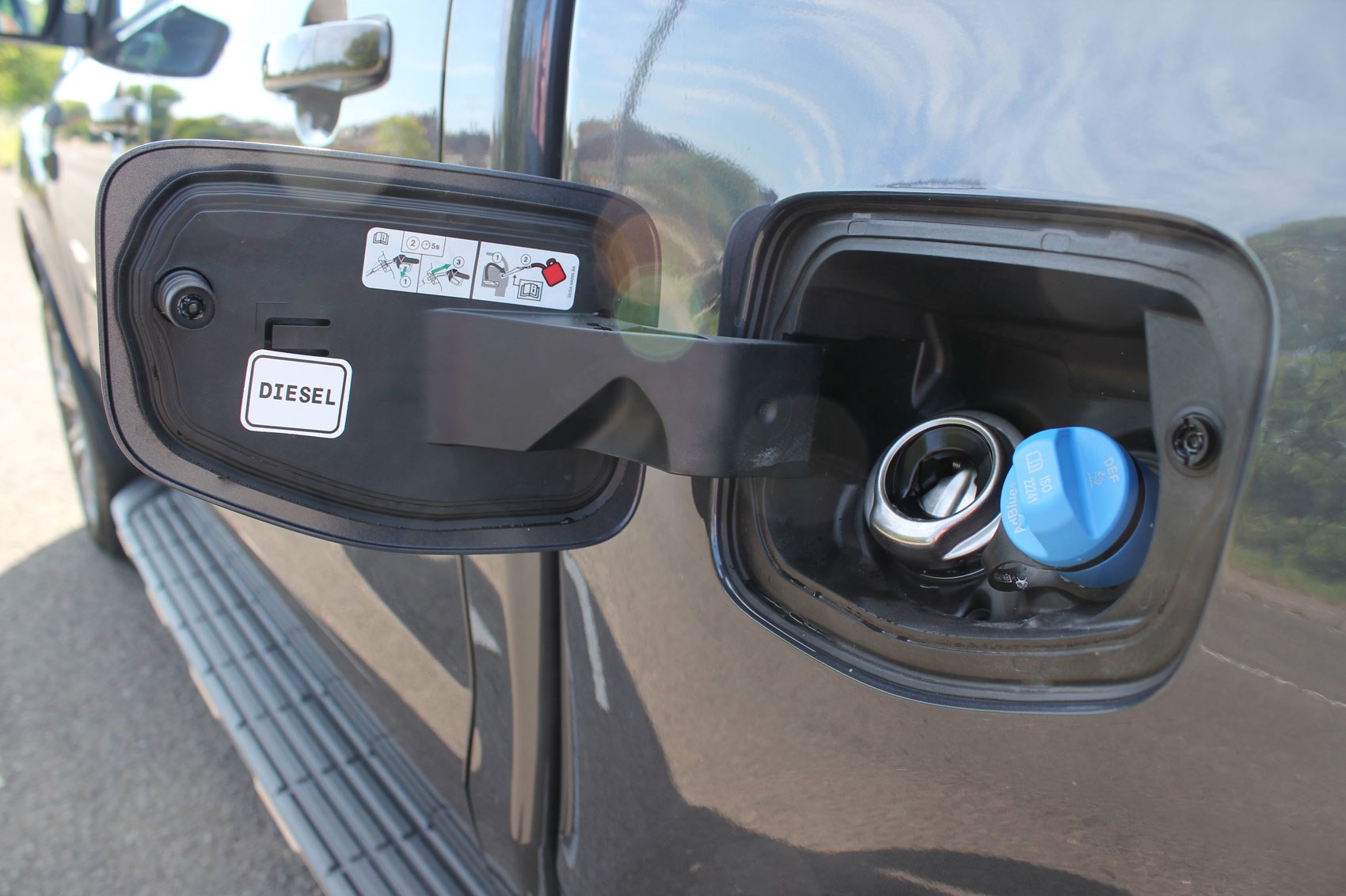
You shouldn't get the two confused, as the AdBlue filler has a cap while the diesel filler is a Ford Easy-Fuel design, and doesn't.
AdBlue is used in the Selective Catalytic Reduction (SCR) system to reduce nasty NOx emissions that cause poor air quality. You can't run the updated Ranger without AdBlue, but its 20-litre tank should last several thousand miles. It is another expense you need to consider, though.
Is the Ranger a premium lifestyle choice?
Still, the Wildtrak is certainly an attractive proposition – at least to look at.
As the range-topping Ranger, it falls firmly into the lifestyle pickup camp, with 18-inch alloy wheels as standard, titanium-effect exterior detailing and a chunky off-road appearance.
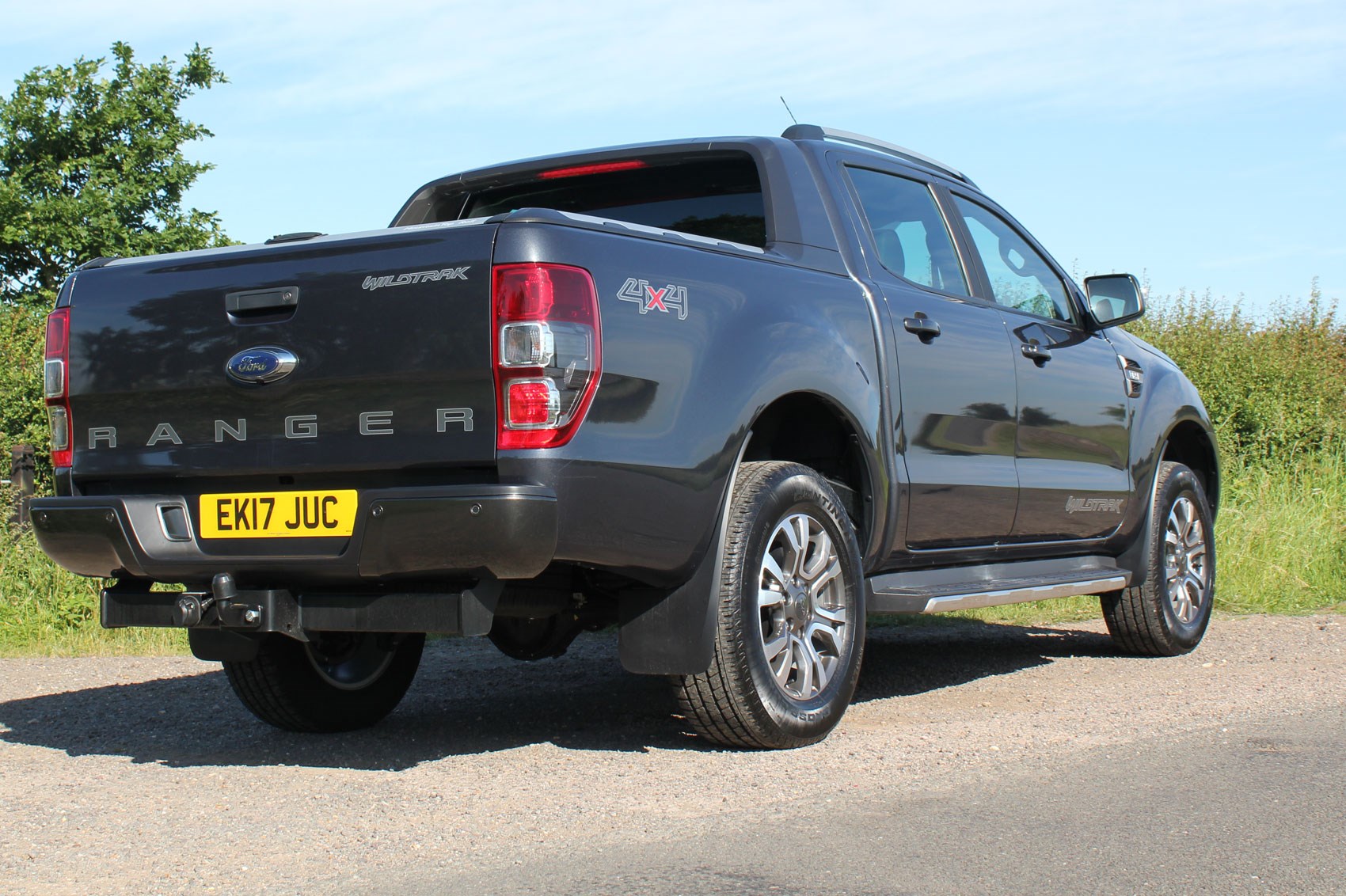
This particular example has an additional off-road pack (£300+VAT at the time of writing), which adds proper underbody protection, plus a locking rear differential for tackling tough terrain. It already has an electronically switchable four-wheel drive system.
The aerodynamic sports bar – complete with integrated load-bed lighting – is similarly totally standard, as are the eye-catching graphics and rear parking sensors.
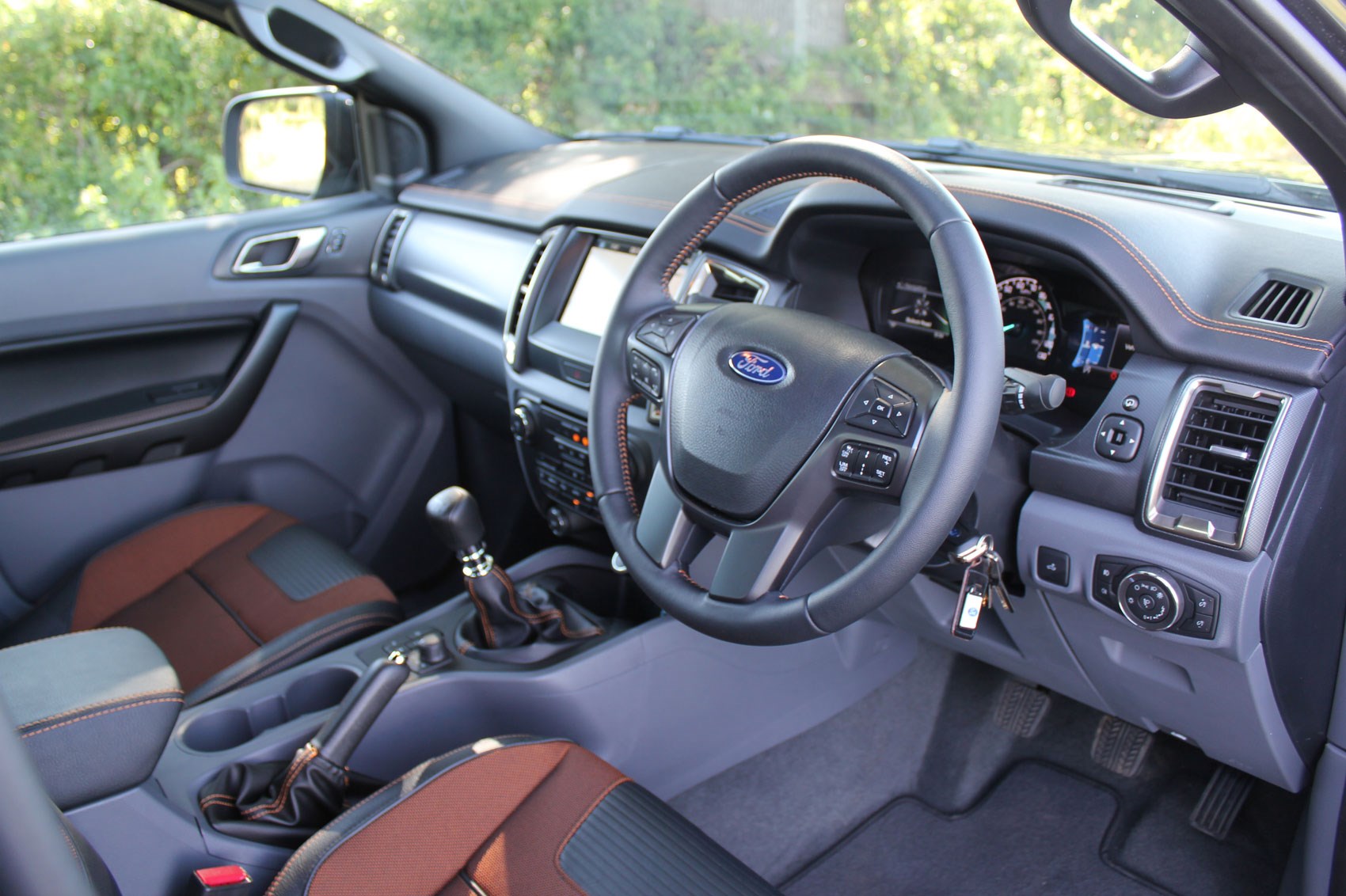
On the inside there's Ford's latest 8.0-inch Sync 3 touchscreen infotainment system, complete with sat-nav, DAB, Bluetooth, Apple CarPlay, Android Auto and rear parking camera. Plus a heated windscreen, dual-zone climate control, cruise control and special Wildtrak upholstery, firmly underlining the idea that this is luxury truck, not a working vehicle.
This one even had a whole suite of active safety aids in the form of the (£1,125+VAT) Driver Assistance Pack, which includes an upgrade to adaptive cruise control plus traffic sign recognition, lane departure warning, automatic main beam and collision mitigation.
The last is not, in fact, a particularly big bumper, but an alert to warn you that the Ranger thinks you're about to drive into the car in front.
For a pickup, it's pretty fancy.
What's the Ford Ranger Wildtrak like to drive?
Shame then, that this visual appeal doesn't really translate to the driving experience.
Given the various fixed-rate taxation costs, you might be interested in a Ranger like this as an alternative to a conventional SUV. If so, you'd be wise to drive one first.

As pickups go, the Ranger Wildtrak is entirely acceptable. It is, after all, designed to carry over a tonne of load in the back. As such, the ride is firm, and somewhat jiggly at low speeds – if not so much as the 2.2-litre Ranger – yet rewards you with limited lean in the corners once you start to go faster.
But there's no denying that piloting one of these demands more effort than an ordinary car. With gearing intended to deliver off-road control, the Ranger takes quite some time to get up to speed, even with a large, 200hp engine under the bonnet; you'll need to plan well ahead when using short slip roads.
Things aren't helped by the unpleasantly notchy six-speed manual gearbox, which is especially recalcitrant when cold. Even the steering requires plenty of effort, and although it actually handles pretty well for a pickup, it doesn't dart down a twisty road with anything like the enthusiasm of a passenger car.

Still, the five-cylinder engine makes a much more agreeable noise than the smaller four-cylinder alternative, and with 470Nm of torque available 1,500-2,750rpm it should make light work of the Ranger's 3.5-tonne towing maximum.
If driving's a priority, we'd still consider the Nissan Navara or VW Amarok instead.

Something that has changed for Euro 6 is payload, the addition of the AdBlue system causing the Wildtrak's to fall from 1,024kg to 1,011kg.
Running costs
How much does that 13kg payload reduction matter? Depends how often you need to travel fully loaded. In a working truck it could ultimately lead to additional journeys, but in a lifestyle model like this? It's probably less of an issue.
Likely to be of greater concern is that the move to Euro 6 has also reduced the Ranger's fuel efficiency.
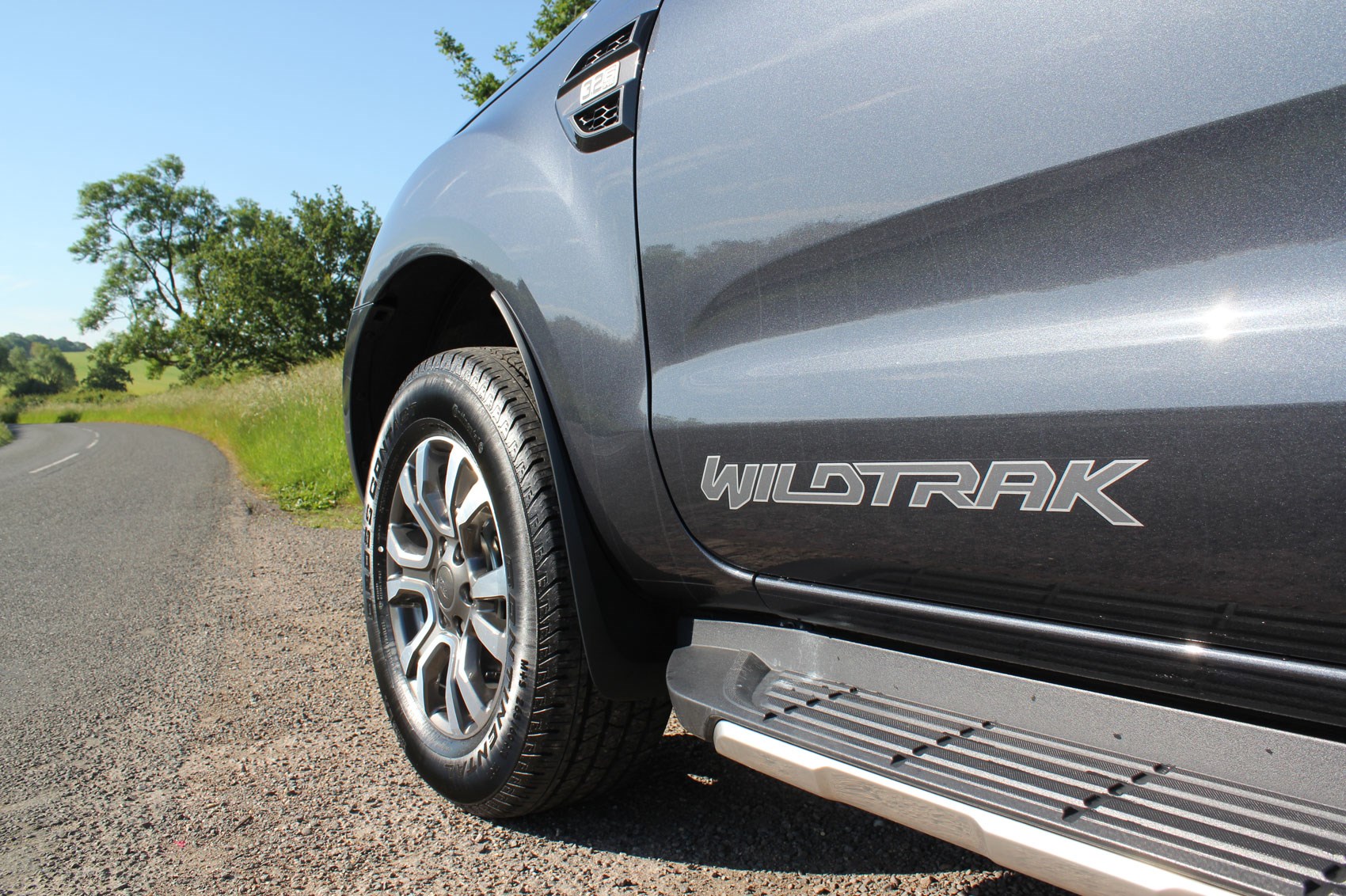
It's only a slight dip in the official claimed figure – which falls from 34.0mpg to 33.6mpg – but add that to the extra expense of AdBlue, and the costs slowly begin to mount up. It's not as if 34mpg was particularly impressive in the first place.
Euro 6 isn't intended to improve fuel economy, though, as it specifically targets NOx emissions. CO2 (which used to be the big bad, remember, and is directly linked to mpg) actually increases here.
Ford Ranger Wildtrak Euro 6 verdict: should I buy one?
The Ranger Wildtrak is a good-looking, well-equipped pickup that's now compatible with the latest emissions regulations. If you were already very keen to get one, then there's little reason not to proceed.
But. It is a shame that Euro 6 only brings bad news from a practical perspective – this Ranger now carries less and will cost more to run. The differences are minimal, but they're still negative. And some rivals – such as the Mitsubishi L200 and Isuzu D-Max – have achieved Euro 6 without experiencing them.
There are indisputably much nicer driving pickups on the market, too.
Ford Ranger Limited 3.2 Euro 5 review
Tested February 2016 by Liam Campbell
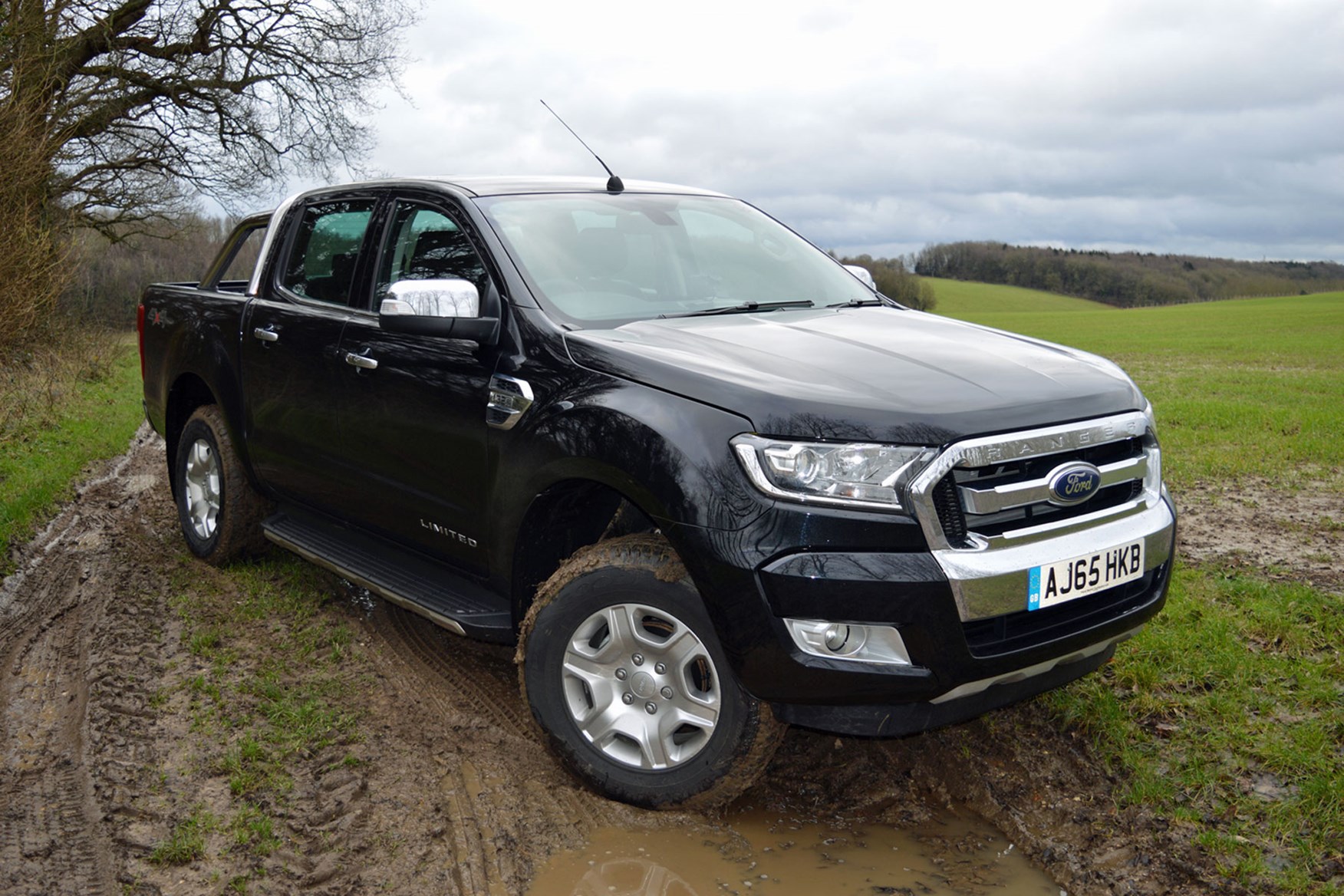
- Minor facelift for the 2016 model year
- Fitted with the mammoth 3.2-litre, five-cylinder engine
- Moderate price increase to £22,995 plus VAT
The Ford Ranger experienced a mid-life makeover inside and out in 2016, and the UK launch gave us a chance to refresh ourselves with the popular pickup. We put one of the bestselling models, the Limited, to the test, fitted here with a monster 3.2-litre five-pot engine.
On the outside, the Limited is arguably more attractive than the top-of-the-range Wildtrak because of the chrome detailing (Wildtrak uses black plastic) on the door mirrors, grille, side air vents and roll bar.
In the cab
On the inside, the chunky, Casio G-watch inspired design has been replaced by a more modest and functional approach. Infotainment is provided by an intuitive 8.0-inch screen that allows you to view different menus at the same time, and features Ford Sync 2, DAB radio, voice and steering-mounted controls, and Bluetooth connectivity, although sat-nav and reversing cameras are still optional extras.
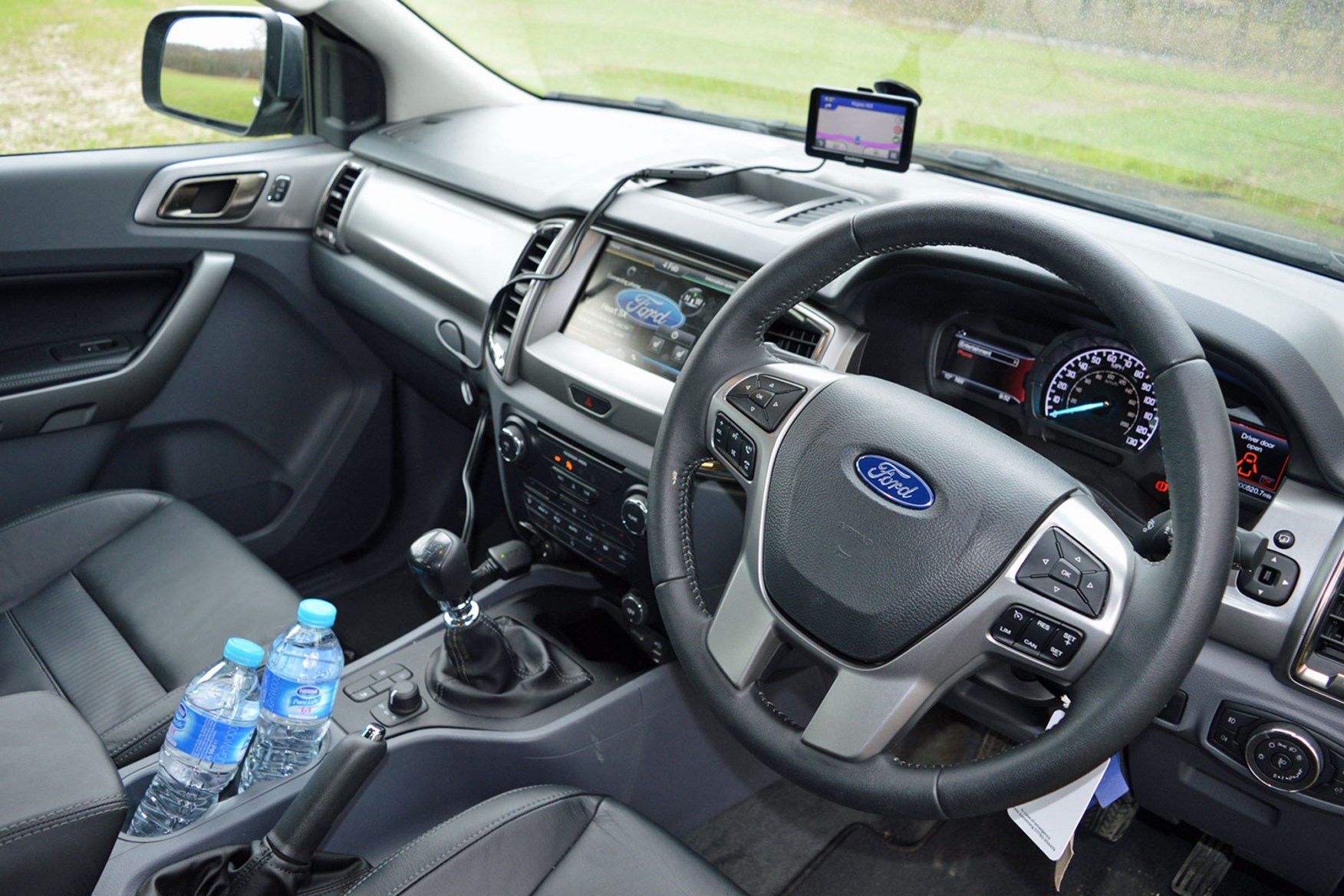
The cab itself is spacious, although visibility out of the back isn't the best (even by pickup standards) which makes the reversing sensors all the more important. The leather seats are comfortable and accommodating for drivers of most shapes and sizes thanks to the eight-way adjustability (including lumbar support) and reach and rake adjustable steering wheel.
There are a number of handy quick-access storage spaces, including in front of the gear stick, on the dashboard and a large, central cubby that is cooled.
Loading and towing
When it comes to productivity, the Ford Ranger has always performed relatively well. Back when the pre-facelift version was launched in 2011, it was the first vehicle to offer a 3.5t towing capacity but the payload of 1,050kg is below the sector average, largely owing to the extra weight of the larger engine and increased equipment levels.
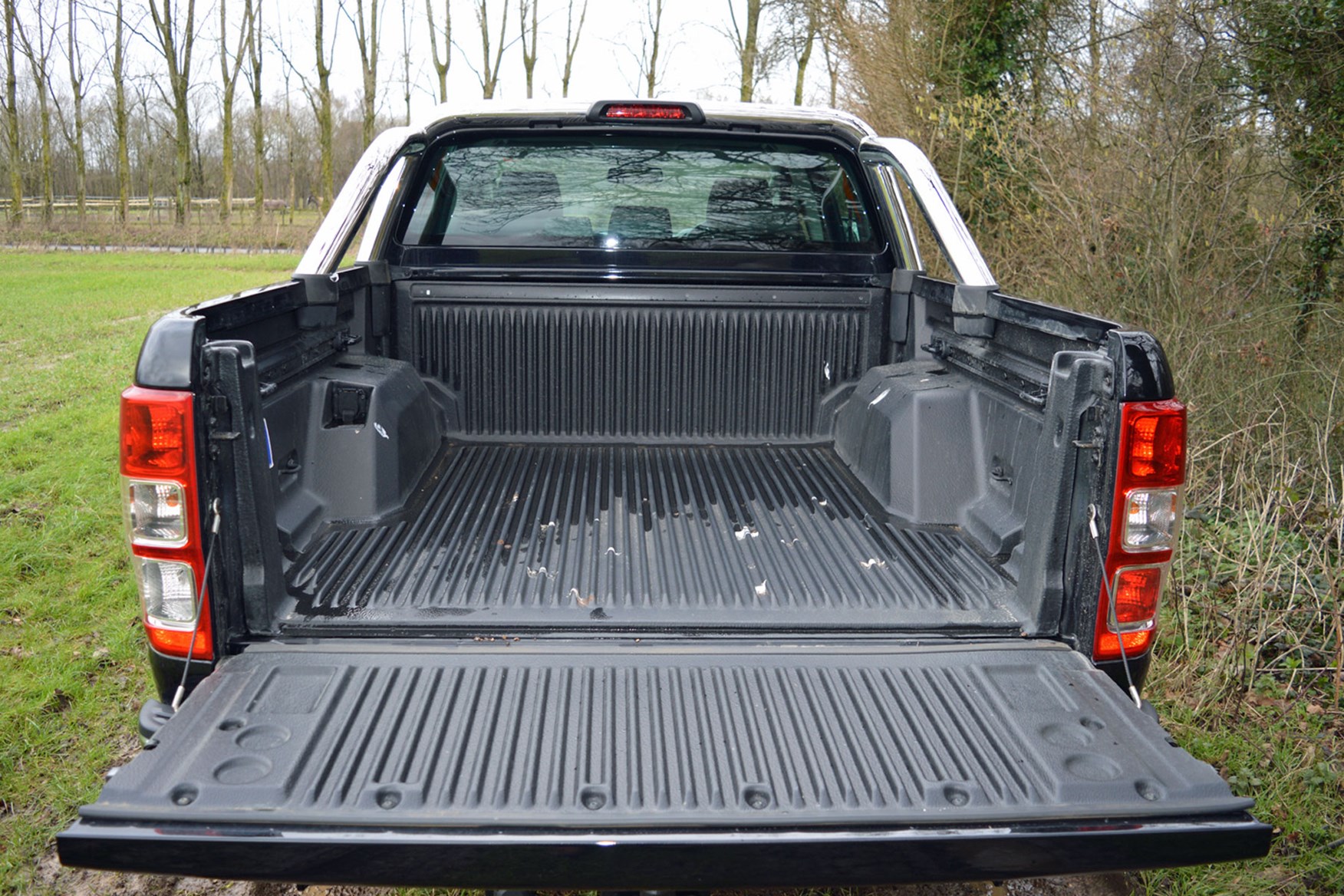
Measuring 1,549mm long, 1,560mm wide and 511mm high, the Ford Ranger offers one of the largest load beds for any double-cab pickup. The load bed is covered by a tough and durable PVC liner, there is a handy 12-volt socket for charging tools and the rear tailgate opens to 90 degrees.
On and off the road
In terms of on- and off-road performance, the Ford Ranger has always been a good all-rounder.
Under the bonnet is Ford's mammoth 3.2-litre five-cylinder engine, which produces 200hp and 470Nm of torque. Despite this, the 2.2-tonne kerb weight means that it isn't quite as spritely as the figures suggest, but there are very few jobs that will trouble it.
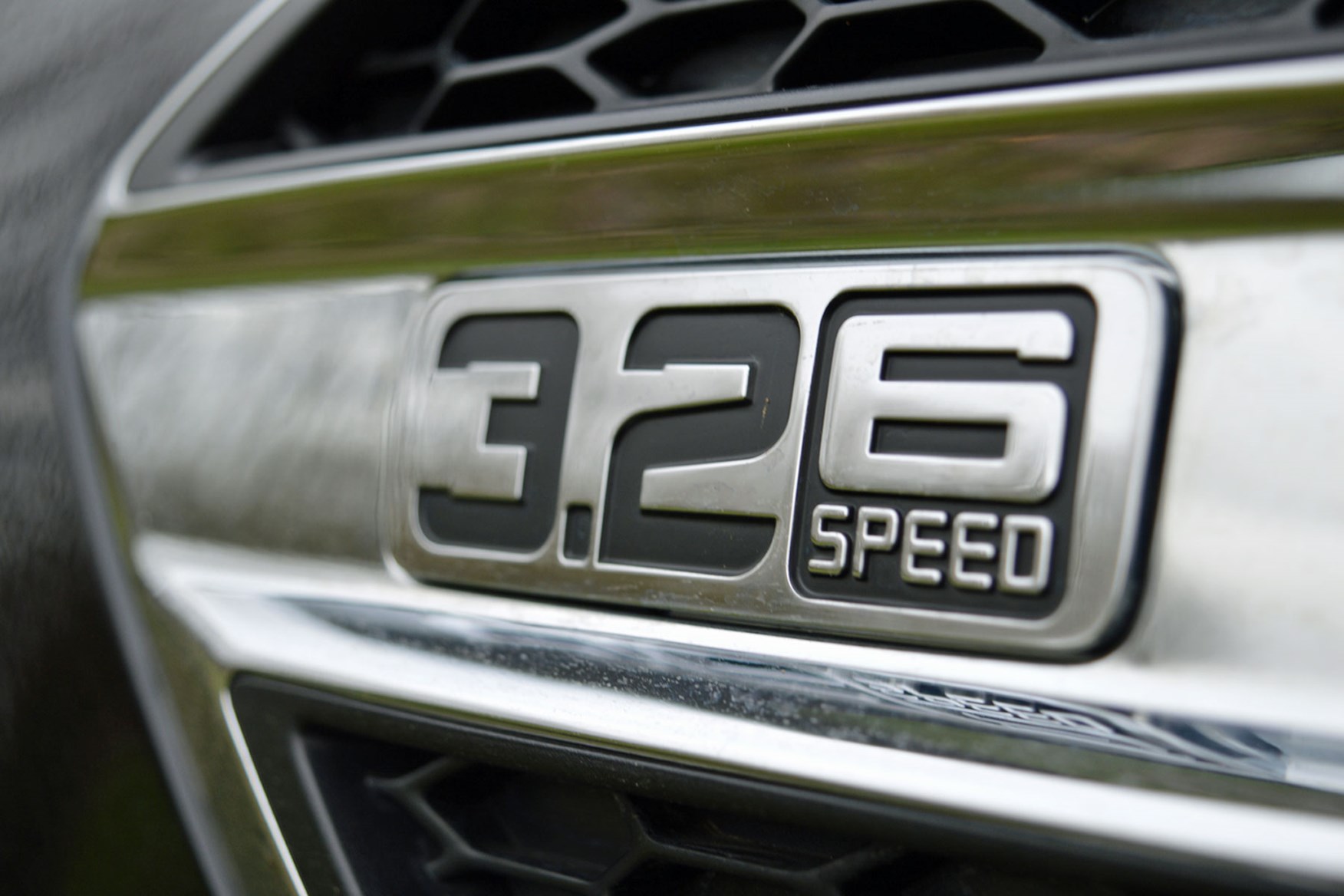
One of the greatest strengths of the Ranger is its cornering. The steering is accurate and quite light, and the body keeps its composure in the bends. The only real concern was the noise; the 3.2-litre engine is quite loud during acceleration and can cause a bit of disturbance in the cab.
Off the road, and again, the Ranger performs pretty well. The all-wheel drive system has three settings: 2WD-High, 4WD-High and 4WD-Low, and these are backed up by Electronic Stability Control (ESC) with integrated Traction Control, although there is no locking rear differential.
The first gear of the Ford Ranger is one of the slowest in the sector, which means hills can be tackled at a safe speed without the need for braking. The maximum approach and departure angles are set at 28 degrees and there is an impressive wading depth of 800mm.
Pricing and summary
There is very little difference between this and the pre-facelifted version of Ford Ranger. The 3.2-litre engine retains the same power ratings and fuel economy, and there have been no changes to the suspension, chassis and driveline.

Ford, instead, has only made changes where they needed to be made. The new infotainment system with Sync 2 is one of the most comprehensive on the market, and the new grille and headlights provide a meaner and tougher appearance.
Prices on the Ford Ranger Limited have increased ever-so-slightly from £22,358 to £22,995 plus VAT. Interestingly, certain optional extras have reduced in price, like the satellite-navigation and rear reversing camera, from a combined price of £750 to £600 plus VAT.
Ford Ranger Black Edition Spec
Source: https://www.parkers.co.uk/vans-pickups/ford/ranger/2011-review/


0 Komentar